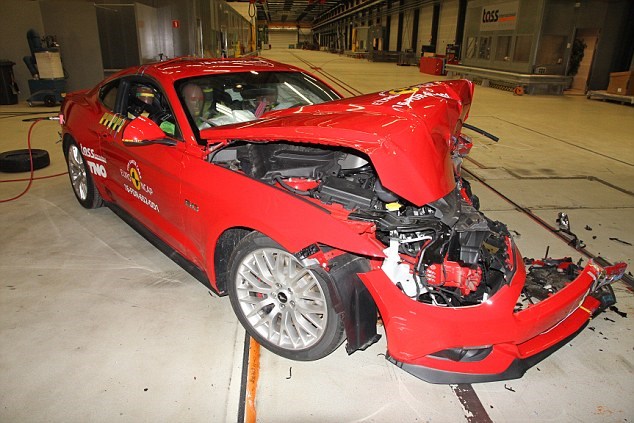The Ford Mustang V8 Fastback coupe has been awarded just a 2-star ANCAP safety rating.
Other variants of the popular two-door sports car are still to be tested by ANCAP, Australasia's independent vehicle safety organisation which is backed by groups such as the New Zealand Automobile Association.
However Ford New Zealand spokesman Tom Clancy insisted the Mustang was a safe car.
“It has already proven its high level of safety in tests at the NHTSA’s New Car Assessment Program (NCAP) in the US where it earned a five-star Overall Vehicle Score and the US IIHS, a ‘good’ rating,” he said.
“The overall Euro NCAP rating is based on 4 pillars (Adult, Child, Ped, Driver Assist Technology) and Mustang delivered a four-star result for Adult Occupant Protection, a three-star result for Child Occupant Protection and a five-star result for Pedestrian Protection.
“However, a two-star result in the Driver Assist Technology pillar determined the overall result of a two-star rating. They don’t average the scores.”
AA Motoring Services General Manager Stella Stocks says the Mustang range has a lot of appeal to the market, which she relates to.
“The Mustang Fastback’s 2 star safety rating is extremely disappointing. It’s not what we’d expect from Ford or any major vehicle manufacturer today, especially when ANCAP testing protocols are well known by all car makers,” Ms Stocks says.
The Mustang Fastback performed poorly across three of the four areas of assessment. Both adult and child occupant assessments didn’t reach the 5 star mark, but the poorest area was the lack of safety assist technology, which ultimately assured the 2 star safety rating.
Ms Stocks says it’s important to note the Mustang sold in Australasian markets and Europe is a different specification from the vehicles available in the United States. The US models include forward collision warning for example, which is not available in New Zealand.

The Ford Mustang rating was limited to 2 stars due to its poor performance in three of the four areas of assessment – Adult Occupant Protection, Child Occupant Protection and Safety Assist. The poorest performing area of assessment was Safety Assist with the Mustang scoring 2 points out of a possible 12 points (16%).
“It’s disappointing speed assistance systems, lane support systems, autonomous emergency braking, forward collision warning and rear seat belt reminders are all missing from the Mustang,” Mr Goodwin said.
“Of concern, the full width frontal test showed a risk of serious head, chest and leg injury for the rear passenger. There was also insufficient inflation of both the driver and front passenger airbags in the frontal offset test which allowed the driver’s head to contact the steering wheel and the passenger’s head to contact the dashboard,”
“The driver’s door opened in the pole test, and whiplash protection for rear-end collisions was marginal.
“This rating is not intended to shock or surprise – it simply presents the safety of this car against that of its contemporary competitors,”
He said Ford should introduce design and production changes to improve its safety performance.




